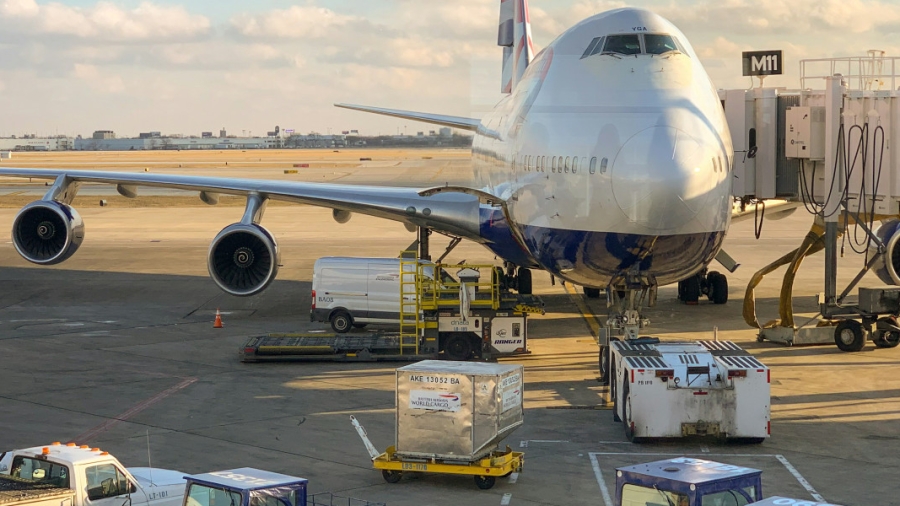Surging Demand and Rising Rates
Demand and rates for airfreight transportation are soaring through the typically quiet summer season. This unexpected surge is driven by the relentless growth of e-commerce from China and shippers pulling forward orders for the winter holidays to avoid rising costs, capacity shortages, and ocean shipping delays.
Air cargo volumes remain high from major Asian and Middle Eastern origins, especially to Europe. This is partly due to cascading effects on port productivity from the effective closure of container lines’ Red Sea shortcut due to the Middle East conflict.
E-commerce Dominance
Airlines are increasingly reliant on business from China’s online retailers. E-commerce has become the dominant force in air cargo shipping on the main trans-Pacific eastbound and China-Europe lanes. Fast-fashion maker Shein, along with online markets Temu and Alibaba, are pushing parcels directly to consumers year-round, bypassing the typical seasonal fluctuations experienced by other retailers.
“Anecdotally, we’re looking at about 20% of global volumes today being e-commerce. In the trans-Pacific, we’re in the 60%-to-70% range, and sometimes higher,” said Glyn Hughes, director general of The International Air Cargo Association (TIACA). “The e-commerce platforms foresee a significant increase in their capacity needs in Q3 and are opening up new markets.”
Early Indicators of a Massive Peak Season?
Whether this unexpected market growth is a precursor to a massive peak shipping season starting in mid-September or merely borrowing from future demand remains uncertain. Initially, air logistics professionals projected volumes would grow 3.5% to 4.5% this year from 2023 levels. Instead, chargeable weight has increased by double digits for six consecutive months with no signs of slowing down.
In May, global demand jumped 12% from the same month last year. The spot rate registered its second consecutive monthly growth, rising 9% to $2.58 per kilogram, up 5 points month over month, according to Xeneta. Although the positive momentum ebbed slightly in early June, volumes were still up 9% year-over-year.
The International Air Transport Association (IATA) reported an 11% demand increase in April. Despite this, IATA forecasts a 5% increase in demand for the full year from 2023, with industrywide cargo revenue falling $18 billion to $120 billion, suggesting a slowdown in volume growth in the second half of the year.
Favorable Economic Indicators
Global economic indicators appear increasingly favorable for air cargo. The Purchasing Managers’ Index (PMI) for new export orders in global manufacturing increased for the third consecutive month in April. Industrial production remains in growth territory despite modest easing.
Ocean Diversion and Rising Rates
Deteriorating port conditions from an unexpected surge in ocean volumes since May have caused businesses to shift loads to air cargo, pushing up airfreight rates. Cargo owners are front-loading holiday shipments to avoid potential supply chain disruptions and ensure merchandise arrives in time for the peak shopping season. Concerns include rising freight rates, longer lead times, and port congestion due to vessel diversions to avoid Red Sea attacks and a looming dockworker strike on the U.S. East Coast.
Demand now exceeds available equipment and vessels, with rerouting around Africa stretching carrier networks, resulting in vessel bunching and localized port congestion. This imbalance has caused container rates to jump far above seasonal norms. Daily trans-Pacific and Asia-Northern Europe rates are 50% higher than in April, nearly three times higher than a year ago, and 3.5 times higher than in 2019, according to benchmarking agencies.
The Impact on Air Cargo
As ocean rates outpace those for air, the airfreight market becomes a more attractive alternative for some shippers. The average cost of shipping by air on the trans-Pacific trade lane is now nine times greater than ocean shipping, compared to 22 times higher last December, before Houthi rebels escalated attacks on Red Sea shipping.
Some businesses are also shipping early to avoid U.S. tariff increases on Chinese products and to replenish stock after a post-pandemic inventory clearout. Major retailers like Walmart, Target, and Amazon have reported first-quarter inventory levels down 3%, 7%, and 9%, respectively, indicating the end of the U.S. destocking cycle. The National Retail Federation and Hackett Associates project monthly inbound cargo volume at U.S. container ports to reach its highest level in nearly two years this summer.
Air Cargo Prices and Load Factors
The Red Sea situation is a key factor behind higher costs for air cargo. Global airfreight prices are 6% higher year-over-year, with rates in April and May higher than in October and November — a remarkable fact considering the usual quiet period for shipping. Ocean disruption has pushed up aircraft load factors by nearly 10 points on Asia-Europe lanes to more than 80%, creating a seller’s market.
The Influence of E-commerce
E-commerce volumes are forcing lower-yield general cargo to be trucked to airports in Vietnam, Thailand, and Malaysia. Freight data firm WorldACD reports that on-demand air cargo quotes for flights from Vietnam to Europe have been more than double last year’s level for seven consecutive weeks. TIACA’s Hughes expects online marketplaces to soak up huge amounts of freighter capacity out of Hong Kong and south China this fall.
Shifts in Market Dynamics
The limited recovery of passenger flights between China and North America due to political tensions and the reluctance of U.S. business executives to travel to China is a major factor in the tight capacity and elevated rates on that trade lane. Pre-shipping activity is happening despite questions about the durability of consumer demand and factory orders, leaving the possibility that the peak season could be more muted or end sooner than normal.
Conclusion
The early peak in air cargo demand, driven largely by e-commerce and shifting ocean freight dynamics, signals a transformative period for the industry. While it remains to be seen how this will affect the traditional peak season, the current trends highlight the growing importance of flexibility and resilience in global supply chains.



